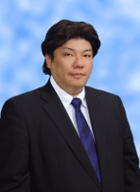JAPAN REPORT

Iseki will produce 90% of its products for overseas markets, mainly Europe and the United States, in Indonesia by 2030. The company will gradually transfer the production of tractors and other products for overseas markets that have been handled domestically and will use the consolidation of production as an opportunity to review product design.
In Japan, the market for agricultural machinery is shrinking, and it is difficult to secure human resources. The company will strengthen the position of its production base in Indonesia to expand its overseas business, particularly in Europe and the United States.
The production capacity of the local plant increased to 22,000 units in 2023, a 20% increase over the previous capacity. At present, the production transfer is about 60% complete.
As Indian companies competing overseas are increasing their offensive with products that are 10-20% cheaper, the company is also reviewing the design of its products. The company will reduce development costs by designing tractor transmissions and other components to be common worldwide. The company will increase price competitiveness by using inexpensive parts from India’s TAFE, with which it has a technical tie-up.
Source: The Nikkei
PSR Analysis: The shrinking of Japan’s domestic agricultural machinery market and the growth potential of Indonesia’s agricultural machinery market are clearly illustrated by this move. According to the Ministry of Agriculture, Forestry and Fisheries (MAFF), the number of farmers in Japan has been reduced by 50% over the past 20 years to approximately 1.16 million. According to the Japan Agricultural Machinery Manufacturers Association (JAMMA), domestic shipments of agricultural machinery are down 30% from 10 years ago. Under these circumstances, it is difficult to expect sales of agricultural machinery to grow.
Meanwhile, in Indonesia, the Ministry of Investment has launched an inspection program for Japanese companies to provide them with investment opportunities in the agricultural machinery industry. The quality of Japanese agricultural machinery and its approach to agriculture itself are highly regarded in Indonesia. In particular, ISEKI and other Japanese brands of rice paddy tractors are popular. The specifications of paddy tractors required by rice farmers are different from those of field tractors in Europe and the United States, such as waterproof performance and a small turning radius for easy maneuverability. Indonesia is the world’s third largest rice producer and exports large quantities of rice to the United States and China.
Although farmers’ incomes remain low and the number of farmers is declining, the Indonesian agricultural machinery market will grow in the long term as more efficient farming is a must to produce a stable food supply for the country’s 270 million people (fourth in the world).
Also noteworthy are developments like those in the automotive industry, such as the use of third-party parts and the sharing of transmissions. The Southeast Asian market is a price-performance market, and no matter how high the performance, if the product is expensive, it will not sell. There will also be a growing movement to create more cost-appealing products. PSR
Akihiro Komuro is Research Analyst, Far East and Southeast Asia, for Power Systems Research


